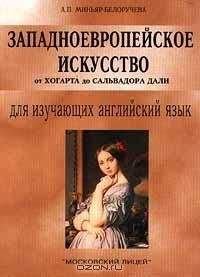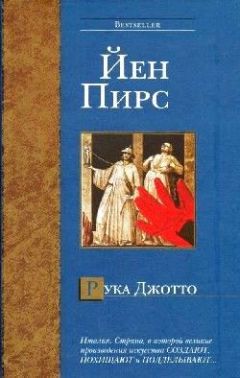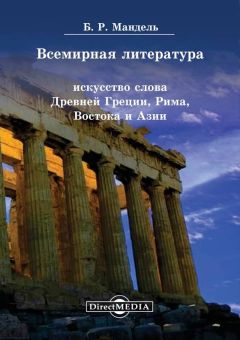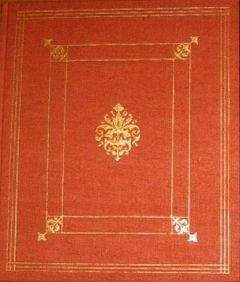А. Миньяр-Белоручева - Западноевропейское искусство от Джотто до Рембрандта
3. Poussin was fond of ceiling painting.
4. Poussin invented five modes or scales in music.
5. Poussin formulated the theoretical basis of his art in 1648.
6. Poussin worked in the grand manner early in life.
II. How well have you read? Can you answer the following questions?
1. What do Poussin's paintings reflect?
2. What did Poussin attempt to recapture in the Inspiration of the Poett?
3. What were the main theoretical principles of Poussin's art? How did Poussin connect painting and music?
4. With what Poussin's painting is the Phrygian mode associated? Why? What is the subject of this painting?
5. Why is the Holy Family on the Steps associated with the Hypolydian mode? Whose influence can be traced in this painting?
6. How did Poussin paint his monumental compositions? Where does Poussin's art triumph? Where does its grandeur appear? Who was inspired by Poussin's compositions?
III. I. Give Russian equivalents of the following phrases:
the embodiment of the Classical spirit; pictorial skill; the royal collection of paintings; the theory of modes; to study engravings; to work on ceiling painting; by analogy with; the execution of vast projects; colossal Baroque monumental commissions; the interest in antiquity; to arrange figures before a landscape; passages of lights and darks; statuary figures; an allegorical scene; to be in keeping with; to owe one's gifts to; divine inspiration; to formulate a theoretical basis of; to abandon the lyrical style; wax figures; the essence of narrative; insignificant details; to bypass the Baroque; to devise a composition; the manner of painting.
II. Give English equivalents of the following phrases:
интерес к античности; по аналогии с; божественное вдохновение; лира Аполлона; создать алтарный образ; обращаться к действительности; избегать низкого в искусстве; отказаться от лирического стиля; в соответствии с идеалами; восковые фигуры; вдохновлять художников; воплощение духа классицизма; претворить в жизнь грандиозные планы; расписывать потолок; сформулировать основы теории классицизма; теория музыкальных ладов; незначительные детали; торжество композиции классицизма.
III. Make up sentences of your own with the given phrases.
IV. Arrange the following in the pairs of synonyms:
a) expound; soft; monarch; rule out; subtle; analogy;
b) sovereign; exclude; smooth; interpret; faint; comparison.
IV. Here are descriptions of some of Poussin's works of art. Match them up to the given titles and describe them.
1. It contains within itself a certain sweetness which fills the soul of the beholders with joy.
2. The light touches Apollo's lyre and part of his cheek
3 The subject is lofty, the conception is powerful, the composition effortless and natural.
a. Rape of the Sabines
b. Holy Family on the Steps
c. Inspiration of the Poet
V. Translate the text into English.
Никола Пуссен – создатель классического направления в живописи. Предметом искусства классицизма провозглашалось только прекрасное; идеалом классицизма служила античность. Пуссен интересовался античным искусством и искусством Возрождения. В 1623 г. Пуссен отправился в Италию. С 1624 г. он жил в Риме. Влияние караваджизма чувствуется в некоторых работах Пуссена. Темы полотен художника разнообразны: мифология, история. Ветхий Завет, Новый Завет. В начале 40-х годов в творчестве Пуссена произошел перелом.
В 1640 г. Пуссен приехал в Париж по приглашению короля Людовика XIII. Первый период творчества Пуссена завершился, когда в буколические темы ворвалась тема смерти. В 40-50-е годы колористическая гамма Пуссена становится все сдержанней. Основное внимание уделяется рисунку и скульптурности форм. Лучшими у позднего Пуссена остаются пейзажи, в которых человек трактуется как часть природы.
vi Summarize the text.
viI Topics for discussion
1. The theoretical basis ofPoussin's art.
2. The role of music in Poussin's paintings.
3. Poussin's artistic influence.
Unit XII Rubens (1577-1640)
Peter Paul Rubens exercised in Flanders a great stylistic authority. Born near Cologne, the son of a Protestant emigre from Antwerp, he spent his childhood in Germany. He received a thorough grounding in Latin and in theology, spent a few months as a page to a countess, and grew up as an unparalleled combination of scholar, diplomat and painter. Rubens spoke and wrote six modern languages, and was probably the most learned artist of all time. His house in Antwerp was a factory from which massive works emerged in a never-ending stream. Although most paintings were designed by Rubens in rapidly painted colour sketches on wood, all the large ones were painted by pupils and then retouched by the master.
Rubens was the man of extraordinary character and intelligence. One visitor recounted how Rubens could listen to a reading of Roman history in Latin, carry on a learned conversation, paint a picture, and dictate a letter all at the same time.
Rubens first emerged on the international scene during his visit to Italy in 1600 where he remained for eight years. Artistically Rubens was an adopted Italian, with little interest in the Early Netherlandish masters. With indefatigable energy he set out to conquer the fortress of Italian art. He made hundreds of drawings and scores of copies after Roman sculpture as well as paintings.
An early work in Antwerp Cathedral, the Raising of the Cross, a panel more than fifteen feet high, painted in 1609-10, shows the superhuman energy with which Rubens attacked his mighty concepts. This central panel of a triptych is a complete picture in itself. There is no hint of Caravaggio's psychological interests. The executioners, whose muscularity recalls Michelangelo's figures, raise the Cross, forming a colossal pyramid of struggling figures. In this painting the typical High Renaissance interfigural composition is transformed into a Baroque climax.
The power of Rubens can be seen at its greatness in the Fall of the Damned, painted about 1614-18, a waterspout of hurling figures raining down from Heaven, from which the rebels against divine love are forever excluded.
As his style matured, Rubens's characteristic spiral-into-the-picture lost the dark shadows of his early works and took on a Titianique richness of colour.
In 1621-25 Rubens carried out asplendid commission from Maria de'Medici, dowager Queen of France, widow of Henry iv, and regent during the minority of her son Louis XIII. Twenty one large canvases represent an allegorized version of the Queen career, showing her protected at every point by the divinities of Olympus. The series were originally installed in a ceremonial gallery in the Luxembourg Palace. All the canvases show the magnificence of Rubens's compositional inventiveness and the depth of his Classical learning; but Henry iv Receiving the Portrait of Maria de ' Medici is one of the best. The ageing King, whose helmet and shield are taken by Cupids, is advised by Minerva to accept as his second bride the Florentine princess, whose portrait is presented by Mercury, as Juno and Jupiter smile upon the proposed union. The happy promise of divine intervention; the youthful figure; the grandeur of the armoured king, and the distant landscape make this painting one of the happiest of Rubens's allegorical works. The Queen never paid for the series. But when she was driven out of France by her former protege Cardinal Richelieuw, she took refuge in Flanders. Rubens helped to support her during her twelve years of exile – a remarkable tribute not only to the generosity of a great man but also to the position of a Baroque artist who could finance a luckless monarch.
In 1630, then 53 years old Rubens married Helene Fourment, a girl of 16. The artist's happiness received its perfect embodiment in the Garden of Love painted about 1638, a fantasy in which seven of the Fourment sisters are happily disposed throughout the foreground before the fantastic fountain-house in Rubens's own garden in Antwerp. Cupids fly above the scene with bows, arrows, a rose garland, and torches, and on the right sits a statue of Venus astride a dolphin. All the movements of Rubens's colour, all the energy of his composition are summed up in the radiance of the picture, the happiest Baroque testament to the redeeming power of love.
Make sure you know how to pronounce the/allowing words:
Antwerp; Luxembourg; Cologne; Protestant; emigre; Medici; dowager; protege; Richelieuw; Minerva; Flanders; Louis; regent
NotesRaising of the Cross – «Воздвижение креста»
Fall of the Damned – «Падение проклятых»
Garden of Love – «Сад наслаждений»
TasksI. Read the text. Mark the following statements true or false.
1. Peter Paul Rubens was the most educated person of his time.
2. Rubens was fond of High Renaissance masters.
3. As Rubens's style matured, it took on a richness of colour.
4. Rubens's figures were disembodied and mystical.
5. In 1621-25 Rubens carried out a splendid commission from Louis XIII.
6. Rubens depicted the major Roman gods in the portrait of Maria de' MedicI.
II. How well have you read? Can you answer the following questions?
1. When and where did Rubens first emerge on the international scene? Where was Rubens educated?
2. What could Rubens allegedly do at one and the same time? How did Rubens produce his works of art?
3. What is represented in the Raising of the Cross? What kind of painting is it? Where can the power of Rubens be seen? What is depicted in this painting?
5. How did the Michelangelo and the Titian influence Rubens's works of art? In what way did Rubens's works differ from the masterpieces of the Renaissance masters?
6. What do twenty one large canvases present? What is the best painting? What does it portray? What gods and goddesses are depicted there? How are they shown? What do they symbolize? What makes this painting one of the happiest of Rubens's allegorical works? How long did Rubens support the dowager Queen of France? What did it show?
7. What is represented in the Garden of Love? What received its full embodiment in this picture?
III. I. Give Ritssian equivalents of the following phrases:
to exercise a great stylistic authority; a page to a countess; a never-ending stream of works; colour sketches on wood; a helmet and a shield; to emerge on the international scene; indefatigable energy; to raise the Cross; to make copies after Roman sculpture; the superhuman energy; the central panel of a triptych; to carry out a commission; dowager Queen of France; to be protected at every point by the divinities; a ceremonial gallery in the palace; conipositional inventiveness; Classical learning; the divine intervention; the years of exile; executioners; a tribute to; a Baroque artist; to receive its embodiment in; the Baroque testament; the energy of the composition; final coating; the redeeming power of love; Caravaggio's psychological interests; a complete picture in itself; a pyramid of struggling figures.
II. Give English equivalents of the following phrases:
появиться на международной арене; монументальные произведения; годы ссылки; композиционная изобретательность; классическое образование; неуемная энергия; пользоваться большим авторитетом; нескончаемый поток работ; быть защищенным со всех сторон божествами; самостоятельная картина; палачи; сделать множество рисунков; копировать древнеримские статуи; центральная часть триптиха; выполнить заказ; вклад в; могущественный заказчик; парадная галерея дворца; божественное вмешательство; получить воплощение в; напоминать фигуры Микеланджело; искупляющая сила любви; богатство цвета; вдовствующая королева; цветные наброски на дереве.
III. Make up questions with the given phrases.
IV. Arrange the following in the pairs of synonyms.
a) regent; to recount; testament; canvas; splendid; executioner;
b) murderer; queen; magnificent; to tell; picture; will.
IV. Here are descriptions of some of Rubens's works of art. Match them up to the given titles…
1. Cupids fly above the scene with bows, arrows, and torches,
2. Grotesque figures rain down from Heaven.
3. The executioners form a colossal pyramid.
4. The gods advise the King to accept her as his second bride.
a. Henry iv Receiving the Portrait of Maria de' Medici
b. Raising of the Cross
c. Garden of Love
d. Fall of the Damned
V. Translate the text into English.
Питер Паул Рубенс, крупнейший фламандский художник XVII в., был одним из самых образованных людей своего времени. Первые годы своей творческой жизни Рубенс провел в Италии. В Венеции он изучал работы Тициана, в Риме – произведения Микеланджело. В Италии Рубенс быстро стал знаменитым. С 1601 г. он – придворный художник герцога Гон-зага в Мантуе. В 1608 г. Рубенс вернулся на родину во Фландрию. Он много работал над монументальными произведениями. На одном из них – алтарном образе «Воздвижение креста» – изображен распятый Христос. В 1621-1625 гг. Рубенс получил заказ на цикл из 21 картины «Жизнь Марии Медичи» от французской королевы, вдовы Генриха iv, для украшения Люксембургского дворца. Это – блистательное творение монументально-декоративного искусства. Здесь наряду с аллегорическими образами и мифологическими персонажами Рубенс изобразил реальные исторические лица.




